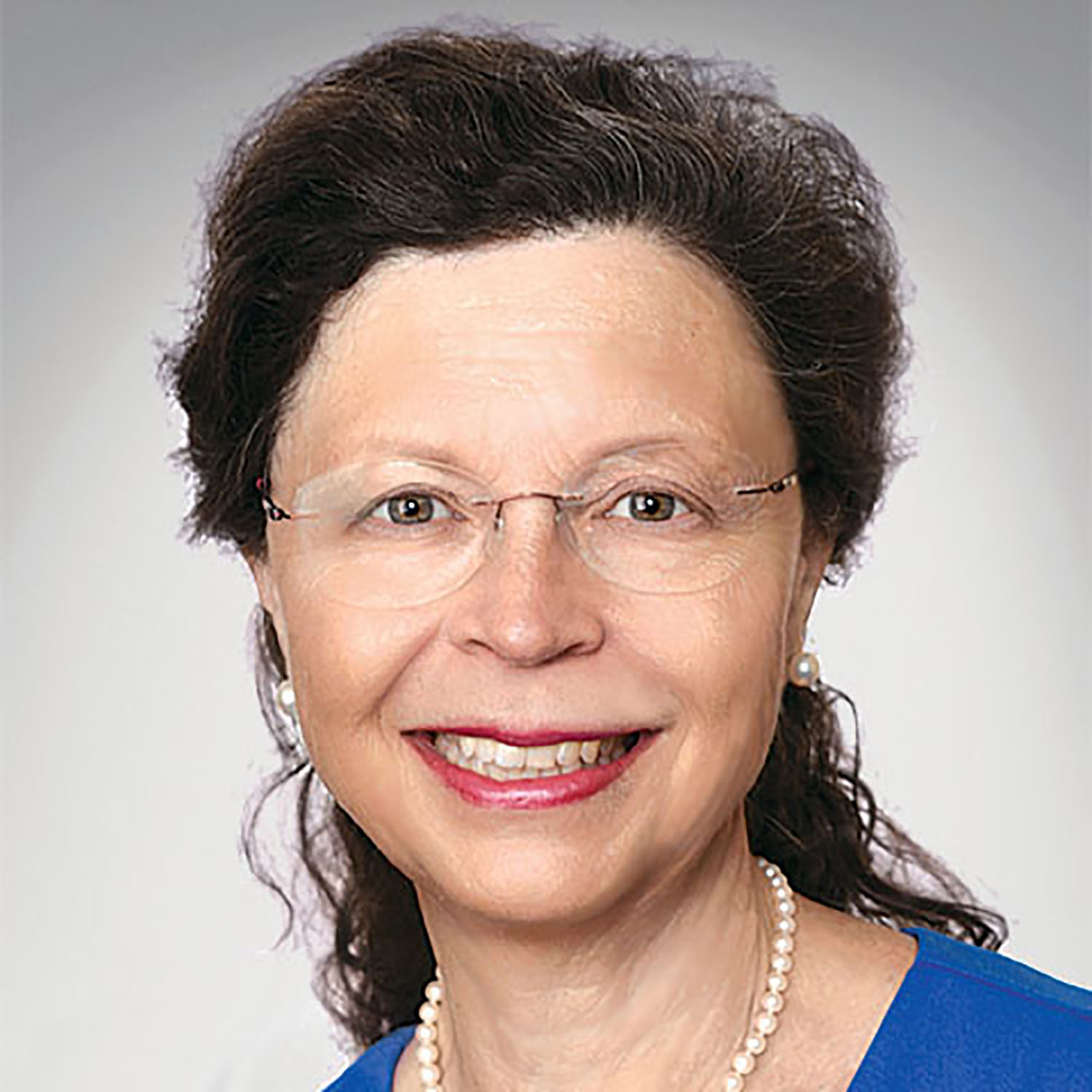This paper was submitted as part of Dr. Sweeney's application for ACOFP Fellowship, which recognizes exceptional national, state, and local service through teaching, authorship, research, or professional leadership. Visit the ACOFP Fellows page to learn more about fellowship and the nomination process.
ABSTRACT
The field of cognitive psychology contains ample evidence that certain learning strategies outperform traditional approaches to teaching and learning for all age groups. More effective learning and teaching has many applications for graduate medical education (GME) and continuing professional development for physicians. Medical educators and physicians have limited time to teach and learn. By making evidence- based learning modalities known to educators and practicing physicians, both groups can be more effective teachers and mentors. This knowledge will also help physicians use their personal study time more effectively.
CULTIVATING A GROWTH MINDSET
Most physicians possess resiliency and fortitude to complete required undergraduate studies to gain entry to medical school and succeed upon matriculation. However, objective success may come at the price of having a fixed mindset based on outcomes and not being able to appropriately embrace the learning process (Diweck, 2006). The first pre-requisite to become an effective graduate physician learner is to try to shed a fixed mindset and develop a growth mindset (Diweck, 2006). Educators must assist residents in cultivating this outlook. A growth mindset is characterized by the willingness to welcome challenges, embrace failures as an opportunity for growth, seek feedback from others and see every member of the care team’s success as enriching the workplace rather than subtracting from one’s view of personal competency. Life is seen through the vision of a “rising tide raises all boats” rather than a competition with winners and losers.
Through my work in graduate medical education, I have observed that learners can feel like failures when setbacks threaten their fixed mindset self-image. A difficulty in a test or an academic struggle can cause a student with a fixed mindset to avoid asking for help, as seeking assistance threatens their image of themselves as a successful, intelligent student.
All physicians have met colleagues with a similar attitude. Fixed mindset physicians tend to put other professionals down and may hide or avoid reflecting on their errors or difficulties. They may work poorly in interprofessional teams and ignore input from nurses, medical assistants, physical therapists and their patients. In the ACGME framework a fixed mindset may decrease competency in professionalism, practice- based learning improvement, systems- based practice and patient care. These physicians are less likely to reflect on their performance and errors, and thus limit their personal and professional growth. They may also surround themselves with staff and colleagues that will not question their judgement or decisions. The fixed mindset limits the physician’s ability to grow and makes it less likely that staff and others around them will give valuable feedback that can often prevent medical errors and increase patient safety (Society to Improve Diagnosis in Medicine).
A physician cultivating a growth mindset takes feedback from others, reflects on their performance and is not threatened by the success of others. This professional remains positive as they meet learning and professional challenges.
The first step of medical educators is to help residents establish a growth mindset. Human beings vacillate from day to day in terms of whether they have a primary outlook of a growth or fixed mindset (Lang, 2016). We also may have different areas of our lives where we can view experiences in a growth mindset. For instance, a physician may be able to be in a growth mindset at work and have a fixed mindset in regard to tolerance of self-perceived “errors” in parenting. He may expect himself to be some version of the “perfect parent” making it difficult to admit errors to his partner and children, limiting his ability to learn and share vulnerabilities at home.
Faculty can encourage a growth mindset. One example would be to help a learner who states they are a “poor test taker”. Residents may extrapolate difficulties they had in medical school and fall prey to all or nothing statements such as “I never do well at standardized tests.” Mentors can help the resident accept that this skill can be learned with effortful practice (Brown, 2014). Another example would be to help a learner appreciate that with patience, consistent effort, and effective study strategies they will increase knowledge retention.
Faculty can share their own struggles and help residents see that although their mentors seem very accomplished and competent, they also experience failure and difficulties. Faculty can share their failures and the resultant growth to emphasize that imposter syndrome is a normative experience (Watto, 2019).
Physicians in practice may feel that if they make themselves vulnerable to their staff and patients by admitting that they sometimes make errors and don’t know all the answers, they will be seen as imperfect. On the contrary, a growth mindset will demonstrate to patients and staff that pointing out when something doesn’t seem right is acceptable. This could be a medical assistant noticing a medication error or a patient or family speaking up about a medicine or therapy recommended by the physician that has had a poor outcome when used previously.
Patient and family input is a vital part of preventing diagnostic errors. A physician that has a fixed mindset may be seen as less approachable by families and patients and decrease their comfort with adding input at time of patient care, which can increase diagnostic errors (Society to Improve Diagnosis in Medicine).
With self-awareness, a person can nurture a growth mindset. The learner with a growth mindset understands that learning is a process and takes satisfaction in successes and can weather difficulties. Learning is an essential part of becoming a physician and maintaining competency. Humans forget 70 percent of what they have read within a few days (Brown, 2014). Evidence-based approaches in human learning derived from cognitive psychology research, can increase residents’ knowledge and make continuing professional development more effective for physicians.
HUMAN MEMORY
It is necessary to understand the basics of how human memory is encoded before discussing best practices in learning.
Humans receive information and input from the environment; for instance, consider a congestive heart failure (CHF) lecture. This information is initially stored in our short- term memory. To encode it in long- term memory and have the information available for recall the next time we see a patient with CHF, we need to make connections with our prior knowledge of cardiovascular physiology and heart disease.
The good news is the human memory has endless capacity (Brown, 2014). The bad news is you can imagine it like a refrigerator - if items are organized you will be able to have the information you need at your fingertips, but without connecting the information in a meaningful way to previous learning or experiences you may find yourself searching through jumbled groceries.
It has never been easier to look up information at point of care via the internet, but a learner will not be able to retain new knowledge if they lack a basic framework of facts and then build connections to prior knowledge and clinical experiences.
In order to practice medicine, a physician needs to remember and retrieve a great deal of information and has limited personal time for study. More effective learning strategies can be part of a wellness program for resident and graduate physicians.
Learners frequently have gaps in knowledge that need to be addressed. Resident study plans will be more effective if evidence-based learning approaches are explicitly taught to learners and incorporated into GME culture.
REREADING
If you have had the pleasure of paying college tuition for your children, you probably have some textbooks in the basement with a wide array of highlights. Yellow first reading, blue- second, pink- third and perhaps even green for the fourth go round. You also purchased a top-of-the-line laptop so your student could type notes verbatim of everything the professor states in class. You may also have had the experience of your college age offspring calling early in freshman year and being distraught that they worked so hard studying, that is re-reading the texts and their type- written notes, yet still did poorly on the midterm examination (Lang, 2016). Though the student is putting a great deal of time into their studies, the results are not what they hoped for. Evidence based learning explains why. The student is suffering from an illusion that learning has taken place (Brown, 2014). Residents in training and physicians in practice may continue using these less effective strategies like re-reading and rely on type written notes rather than using evidence-based learning strategies such as hand written notes, quizzing and purposeful reading (Brown, 2014).
NOTE TAKING
One effective strategy to is to take handwritten notes (Brown, 2014). When typing in a computer at a lecture, a good typist can produce a verbatim account. However, when taking handwritten notes, the learner must rework information in their own words. The act of having to reformulate the information engages the brain to enhance retention. If the learner takes a few moments to review their notes at a later time, learning is encoded even more deeply. In cognitive science, the term elaboration describes when a person teaches their notes to someone else and this effort makes the learning even more effective (Brown, 2014). However, taking handwritten notes will assist the learner to process the information being taught even if they do not utilize the notes in any other way. This simple strategy can make an impact at didactic sessions at residencies, board study and CME meetings. Providing learners with small pocket-sized notebooks along with encouragement for learners to use them at conferences and sign out removes barriers for handwritten note taking.
QUIZZING AND RECALL
Quizzing and testing also have been shown to be extremely effective learning strategies (Watto, 2018). Traditionally, attending physicians have asked residents and students questions. Some learners dislike Socratic questioning as it can cause a learner to feel put down or compared to others. One way to avoid this situation is to make it clear in your residency culture or office that asking questions is intended to assist in the learning process. Faculty can remind learners that they are asking questions because retrieval of information from memory helps the knowledge to become more ingrained and easier to access in the future (Lang, 2016). Even if the learner is not fully correct in their answer, the effort at retrieval will make the individual memory more accessible the next time it is needed. Physicians need to let staff and students know that their goal is to assist with learning and encourage a non- judgmental culture.
Practicing physicians can develop the habit of answering the quiz questions contained in a journal article after a few days and then a few weeks later to encourage retention of the information (Watto, 2018). Family physicians can also participate in ongoing assessments of their clinical knowledge via the maintenance of certification and board review questions.
ILLNESS SCRIPTS
Illness scripts are conceptual models for learning the diseases and symptoms that every clinician has to construct for themselves to practice medicine (Trowbridge, 2015). By holding these scripts in memory, the physician can retrieve these when trying to discern the most likely diagnosis for their patients. Physicians begin to formulate illness scripts as soon as they enter medical school.
Effective continuing medical education reinforces and expands the learner’s illness scripts (https://clinicalproblemsolving.com/reasoning-content/). For instance, when a family physician sees a patient with shortness of breath they will take a history, perform a physical, and will pull up from their memory several illness scripts for shortness of breath. For a 60-year-old male smoker with hypertension, the doctor may compare their scripts for pneumonia, congestive heart failure, coronary artery disease, COPD, pulmonary embolism and deconditioning. The physician will then consciously and subconsciously discern what patient data is congruent or non-congruent within each of these areas of knowledge to come to a working diagnosis. When narrowed to one or two possible diagnosis the physician will choose labs or imaging with the knowledge of the likelihood ratios, strengths and limitations of these tests to support the final diagnosis and treatment plan (Trowbridge, 2015).
The initial and continued development of illness scripts is essential for both resident and practicing physicians (https://clinicalproblemsolving.com/reasoning-content/). It is one of major tasks of the adult learning in the medical field. Rather than tell learners and physicians to read more, it is more effective to give them a conscious paradigm on how to learn and build their illness scripts. As a physician progresses through their career, experiences, reading and continuing education, they will hopefully expand upon the basics laid down in medical school and residency. If this information is placed in an organized format in the brain with connections to previous learning and patient encounters, it will be much easier to recall quickly at the point of care (Lang, 2016).
Some physicians will have key diagrams or flow charts to keep illness scripts organized and retrievable in their memory or pocket notebook.
This process can be analogous to building a wardrobe. Medical students hang new information on diabetes in their illness script closet for diabetes, adding basic information as they proceed on rotations. The greatest difficulty for students is knowing what facts should merit a hanger. Here schema designed by more experienced physicians can help. By the time they are in GME, physicians may have trimmed some facts and added pertinent information regarding the diagnosis and treatment of diabetes. Attendings with more clinical experience will have added more information that helps in the care of diabetes and thus have the ability to know when to be on guard for can’t miss issues such as weight loss and thirst in an adolescent, night-time hypoglycemia, DKA, and how to select diabetic medications based on patient risks. All the basic information on diabetes from medical school is still the foundation of the wardrobe and linked in memory to clinical experiences.
EVIDENCE-BASED LEARNING APPROACHES TO BUILDING ILLNESS SCRIPTS
Peter Brown in his classic book Make it Stick made cognitive psychology research on memory and learning accessible to any reader. He provides practical strategies to translate research into academic learning at all levels and everyday life. The audio book is a highly accessible way to get more in-depth understanding of how to apply cognitive learning science in personal and professional settings.
Generation is a cognitive science term for the motivation needed for effective learning (Brown, 2014). Generation means supplying the “why” to what the learner is reading. Usually physicians are studying to answer a clinical question at the point of patient care so the concept of generation and a why for learning is present automatically. The doctor’s desire to provide the best care for the patient is a tremendous motivator.
Learning is more effective when linked to a specific question and a certain patient. The brain can then link the information in memory so that it is more easily retrieved. Family physicians can often recall all the details of a certain diagnosis by recalling a memorable patient with this concern.
Before researching an answer, the more effective learner will read the abstract and the key headings of the article or chapter, providing a framework in the brain to organize information in short term memory (Brown, 2014).
The human brain also needs time to consolidate information. Taking a break then returning to jot down notes with some key points will make it more likely that the memory trace will move from short-term working memory and encode into long term memory.
Interleaving is a cognitive science term that refers to a way to strengthen learning retention by mixing up practice and memory retrieval (Brown, 2014). This concept is illustrated by the unpredictable mix of conditions that are inherent in a family practice office. The physician who is consciously striving to be a lifelong learner can read briefly on a variety of topics throughout the day and will have better retention than if they went home for a week and studied just one topic without a link to patient care.
To improve learning on the job even further, physicians can challenge themselves to try to create a differential diagnosis and predict a clinical answer before they use internet resources such as UpToDate or referral to a consultant (Hublein, 2021). Prediction is another evidenced based method that enhances learning and memory (Lang, 2016).
Spacing is a cognitive science concept encouraging one to spread studying out over time (Brown, 2014). Short 30-to-45-minute sessions of reading with review spaced out over weekly intervals will result in better retention of information than a massive catch-up study session on a weekend or evening. Handwritten notes or charts improve recall, and their review will enhance information retention.
Quizzing or retrieval practice is essential to learning (Lang, 2016). There are many opportunities for physicians to review question banks and complete simulated cases to help build quizzing into their day. Quizzing is way of scheduling planned retrieval of information to strengthen memory and recall (Watto, 2018).
Elaboration is a learning strategy that can be a natural part of a family physician’s practice (Brown, 2014). One can teach a student or office staff information you find interesting and want to solidify in your memory. The challenge of using patient centered non-medical language to explain a clinical condition to a patient and their family also will strengthen your understanding of the topic. After reading or listening to a medical podcast one can quiz themselves and self-teach by saying out loud the main points that were learned.
Reflection is a useful learning strategy at all stages of learning (Brown, 2014). The physician can jot down in a notebook a few thoughts that they took away from their reading, a CME lecture, a podcast or from the clinic day. Taking a few moments to think about the applications of learning and writing them down increases the ability to pull this information from your memory in the future (Lang, 2016).
CONCLUSION
Family physicians at every stage of training and practice are lifelong learners and teachers. The cultivation of a growth mindset sets the stage for positive and productive learning. Incorporating cognitive science principles can make resident learning and teaching more successful and time effective. Using the principles for continuing professional development can increase physician mastery and expertise translating into career satisfaction and wellness. Increasing physicians’ depth of illness scripts can translate into safer and higher quality care for patients (Dahliwal, 2012).
REFERENCES
Brown, P. C., Roediger, H. L. III, McDaniel, M.A. (2014). Make it Stick The Science of Successful Learning. Harvard University Press.
Dhaliwal G. (2012) Clinical Excellence: Make it a Habit. Academic Medicine, Nov;87(11):1473.doi:10.1097/ACM.0b013e31826d68d9. https://www.ncbi.nlm.nih.gov/pubmed/23111262
Diweck, C.S. (2006). Mindset: The New Psychology of Success. Random House. Geha, R. MD, Manesh, R.MD, Website Clinical Problem Solvers Schema for Illness Scripts. https://clinicalproblemsolving.com/reasoning-content/
Hublein, M. (2021, December 28) Management reasoning and how do we teach it? (Episode 3) [Audio podcast episode]. The Curbsiders Teach.
Lang, J., Bass, J. (2021). Small Teaching Second Edition Everyday Lessons from the Science of Teaching. Wiley and Sons.
Trowbridge, R.L. Jr., Rencic, J.J. and Durning, S.J. (2015). Teaching Clinical Reasoning. Edited by American College of Physicians.
Society to Improve Diagnosis in Medicine https://www.improvediagnosis.org/stories/
Watto, M. (2019, September 6) Hotcakes: Imposter Syndrome, Vacations, Metabolic Syndrome, Pneumonia Vaccine and More! (Episode 173) [Audio podcast episode]. The Curbsiders.
Watto, M. (2018, April 9) Clinical Reasoning: Becoming an Excellent Diagnostician (Episode 90) [Audio podcast episode]. The Curbsiders.
Author's Note
No financial support or grant was provided in support of this work.
I have no known conflict of interest to disclose.






